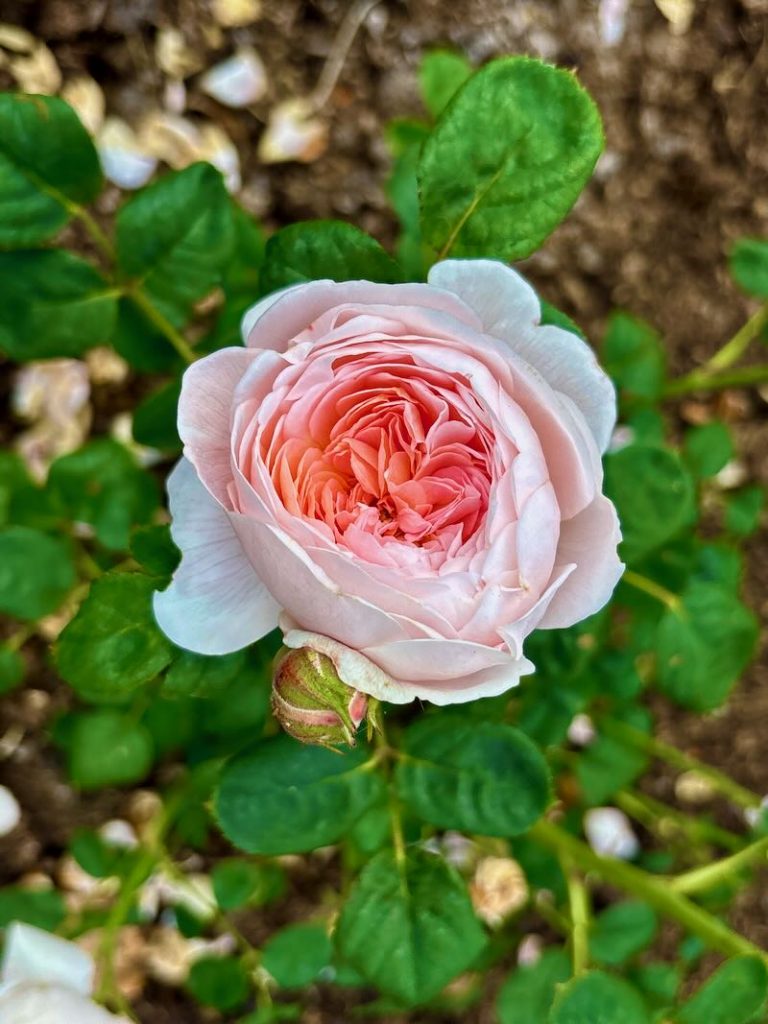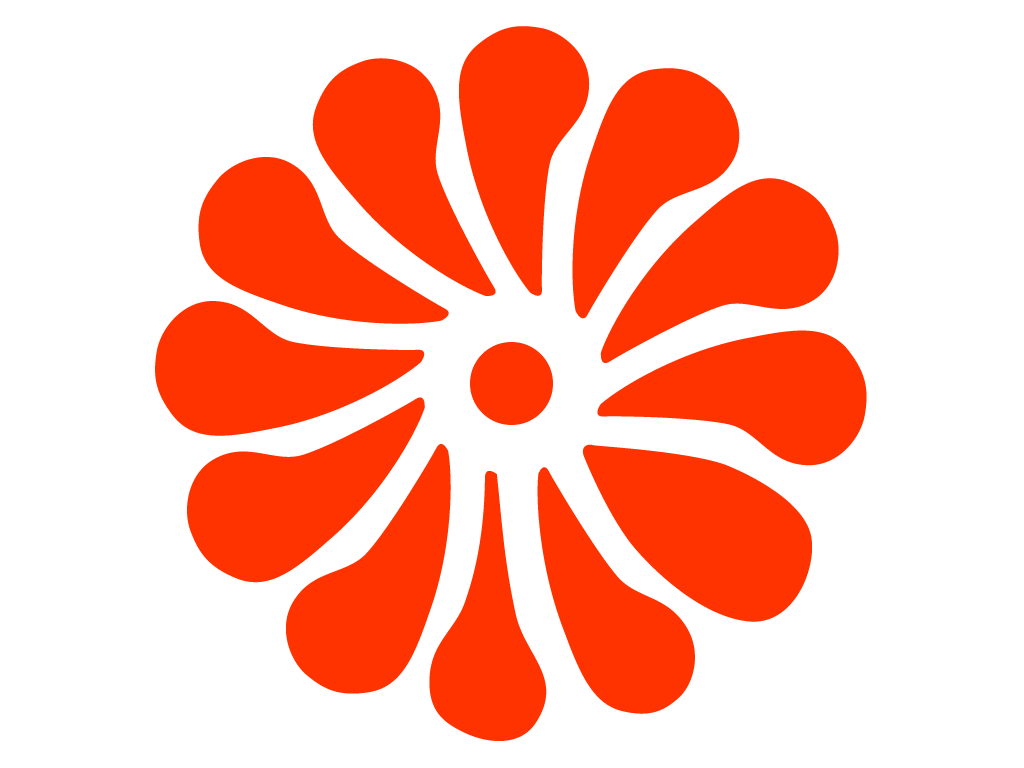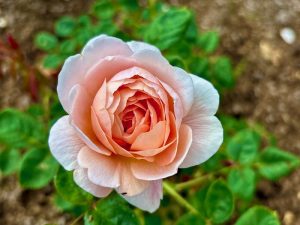Courtly Poise In Blush: Growing Rosa ‘Queen of Sweden®’ For Cut-Flower Perfection
Rosa ‘Queen of Sweden®’ steps into the garden like a royal procession—upright, composed, and luminous. This English Shrub Rose, also known as the Queen Of Sweden Rose, English Rose ‘Queen Of Sweden’, David Austin Rose ‘Queen Of Sweden’, and the breeder-code AUStiger Rose, produces elegant, shallow-cupped flowers that open from apricot-pink buds to soft shell-pink blooms. Each blossom carries a gentle myrrh scent and sits on long, straight, lightly armed stems that make arranging a pleasure.
Expect repeat flowering from late spring until frost, a tidy, bushy habit, and reliable performance in beds, borders, and containers. Belonging to the Rosaceae family, Rosa ‘Queen of Sweden®’ thrives in full sun to light shade, reaches about 1.2–1.5 m tall and 0.9 m wide (4–5 ft by 3 ft), and wins hearts for its polished good looks and cutting-garden utility.
Why Gardeners Choose Rosa ‘Queen of Sweden®’
Gardeners reach for this rose when they want beauty without fuss. The blooms form wide, shallow cups packed with many petals, often more than 100 on established plants, and they face upward instead of nodding. Because the stems are tall and straighter than many English Shrub Roses, you can harvest them for vases without hunting for support canes. The overall impression is refined: an upright, bushy shrub with handsome, healthy foliage that frames the pastel flowers like a classic portrait.
Additionally, this rose tolerates a range of light exposures. Give it full sun for maximum bloom, yet it performs with dappled shade where afternoon sun scorches other plants. It suits small urban plots, side yards, and balcony planters. If you need a repeat-blooming hedge that looks composed all season, plant a row at 60–90 cm (24–36 in) intervals. You’ll enjoy a near-constant flush of flowers that blend easily with blues, lavenders, and silvers.
A Brief Backstory For The English Rose Fan
Bred by the late David C. H. Austin and introduced in 2004, Rosa ‘Queen of Sweden®’ blends the glamour of Old Roses with the repeat bloom and vigor of modern shrubs. David Austin’s English Roses are famous for romantic form and fragrance, and this cultivar showcases both, with the added advantage of tidy, upright growth and minimal prickles on many stems. In short, it’s a rose that respects your time and still delivers bouquets all summer.
The Look: Flowers, Foliage, Habit
The flowers start as tight, apricot-pink buds and open into wide, shallow cups that transition to soft pink as they mature. Individual blooms measure about 7–8 cm across (2.75–3 in). The perfume reads as light to medium with a clean myrrh note—fresh, not heavy. Foliage is medium to deep green, matte to softly lustrous, and sets off the pastel petals. The shrub stands upright with a naturally vertical carriage, usually 1.2–1.5 m tall and about 0.9 m wide (4–5 ft by 3 ft). Growth is steady and disciplined rather than sprawling.
Flowering Season And Performance
Expect flushes from late spring through autumn. In many climates, you’ll see a strong early summer display, a steady midseason rhythm, and a generous finale before frost. Deadhead spent blooms for near-continuous color. Because the flowers face upward and the stems are straighter, the shrub reads crisp and tailored even mid-bloom, with fewer floppy canes than many romantic roses.
Design Ideas With Rosa ‘Queen of Sweden®’
Compose a cool palette: pair with Lavender, Catmint (Nepeta), Salvia, and Russian Sage (Perovskia). Their blue and violet tones intensify the blush petals. For a classic cottage mix, weave in Foxglove, Campanula, and airy ornamental grasses. In containers, use a 50–60 cm (20–24 in) diameter pot with a tall profile to balance the rose’s vertical habit. For hedging, space plants 60–90 cm apart (24–36 in); for solo specimens, give 90–120 cm (36–48 in) of breathing room.
Environmental Tolerances
This rose handles heat when well mulched and watered. It appreciates afternoon shade in hot-summer regions. In colder climates, it overwinters reliably with a protective mulch layer. It tolerates the light shade cast by open trees or a north- or east-facing exposure with bright ambient light. With good air circulation and the right watering rhythm, it maintains excellent foliage quality through the season.
How To Grow Rosa ‘Queen of Sweden®’
Light
Place it where it receives at least 6 hours of direct sun. In hot summer areas, give morning sun with light afternoon shade to protect petals and foliage. In cool-summer climates, full sun (8+ hours) boosts flower production. If you only have dappled shade, choose the brightest spot; this cultivar tolerates it better than many shrub roses, though bloom count will decrease slightly.
Soil
Plant it in rich, well-drained soil. Aim for a pH of 6.0–6.8. Heavy clay? Improve drainage by mixing in well-rotted compost and coarse grit before planting. Very sandy soil? Add compost and a small amount of clay-based topsoil to improve water holding. In containers, use a high-quality, peat- or coir-based potting mix amended with 10–20% compost for fertility and 10% perlite for airflow.
Watering
Water deeply to train roots down. In the first season, provide about 10–15 L (2.5–4 gal) per plant weekly, split into two soakings during hot spells. Adjust for rainfall and soil type. After establishment, water when the top 5–7 cm (2–3 in) of soil feels dry. Early morning irrigation keeps foliage drier by evening and reduces disease pressure. In containers, check daily in heat; pots can dry out fast.
Fertilizing
Feed for steady bloom, not leafy excess. In early spring, scratch in 60–90 g (2–3 oz) of a balanced slow-release rose fertilizer per plant, or top-dress with 2–3 L (about 1–2 quarts) of compost. After the first flush, refresh with a light organic feed or a half-rate balanced liquid fertilizer. Stop fertilizing 6–8 weeks before your average first frost to avoid tender, late growth.
Temperature & Hardiness
Grow it in USDA Zones 4–11, with best performance in the middle range. In colder zones, mound 15–20 cm (6–8 in) of composted bark or leaf mold around the crown after hard frost to buffer freeze–thaw cycles. In hot zones, mulch 5–7 cm (2–3 in) deep to cool the root run and hold moisture.
Planting & Spacing
Plant in early spring or autumn. Dig a hole twice as wide as the root mass and equal in depth. Set graft unions at or just below the soil line in cold climates and slightly above in warm climates, according to local practice. Backfill with amended native soil, firm gently, and water to settle. Space 60–90 cm (24–36 in) apart for a flowering hedge; give 90–120 cm (36–48 in) for specimen air flow.
Mulching
Apply a 5–7 cm (2–3 in) mulch layer—composted bark, shredded leaves, or leaf mold—over a weeded, damp soil surface. Keep mulch 5 cm (2 in) away from stems to prevent rot. Mulch regulates soil temperature, suppresses weeds, and conserves moisture, all of which support repeat flowering.
Containers
Choose a container at least 50–60 cm (20–24 in) wide and deep, with generous drainage. Use a sturdy potting mix and elevate the container on pot feet to improve air flow. Water thoroughly when the top 3–4 cm (1–1.5 in) of mix feels dry; fertilize more lightly but more often than in-ground plants, since nutrients leach from pots.
Support & Training
Most plants stand upright without staking. In windy sites, insert a discreet stake and tie loosely with soft ties. For a slim column effect, prune to three to five strong vertical canes in spring and allow flowering laterals to develop along them.
Pruning Rosa ‘Queen of Sweden®’ For Form And Flowers
Prune in late winter or very early spring, just as buds swell. First remove dead, damaged, or crossing wood. Then reduce the remaining canes by roughly one-third, cutting to outward-facing buds 0.6 cm (¼ in) above the bud at a slight angle. This encourages a shapely framework and strong, upright stems. Through the season, deadhead by removing the spent flower cluster to the first strong five-leaflet leaf. In late summer, you can leave some blooms to enjoy hips and late color if your climate allows, but deadheading maintains the most continuous display.
Feeding, Water, And Bloom Rhythm Through The Season
At leaf-out, feed lightly and water deeply. As buds form, maintain even moisture so petals develop fully and open cleanly. After the first flush, give a quick organic feed—compost tea or a balanced liquid fertilizer at half strength—then water well. This reset often triggers a strong second flush. During heat waves, prioritize water and mulch over extra fertilizer; the plant will resume energetic bloom with the next temperature break.
Cut-Flower Tips For The Queen Of Sweden Rose
Harvest stems when flowers are at the wide-bud to just-opening stage. Cut in the cool of morning with clean pruners. Strip lower foliage, recut stems under water by 1–2 cm (½–¾ in), and place in fresh, lukewarm water with floral preservative. In arrangements, this rose lasts several days thanks to its densely petaled form and straight stems. For a delicate look, pair with airy grass plumes, Baptisia foliage, or lavender spikes.
Propagation Of Rosa ‘Queen of Sweden®’
Take semi-ripe cuttings in mid to late summer from non-flowering shoots 10–12 cm (4–5 in) long. Remove lower leaves, wound the base lightly, dip in rooting hormone, and insert into a free-draining medium. Keep humid but not wet until rooted. Budding onto vigorous rootstock is another professional method. Note that protected cultivars may be covered by plant breeders’ rights or patents; commercial asexual propagation without authorization is prohibited. For home gardeners, check regional rules and source new plants from reputable nurseries.
Pests & Diseases On Rosa ‘Queen of Sweden®’
This cultivar shows good general health, yet every garden brings challenges. Scout weekly and act early.
Aphids cluster on buds and new shoots, causing distortion. Rinse with a sharp water spray or use insecticidal soap. Beneficial insects often clean them up if you avoid broad-spectrum chemicals. Spider mites thrive in hot, dry conditions, stippling leaves. Increase humidity with early-morning hose-downs, and, if needed, apply horticultural oil labeled for mites. Thrips can mark petals, especially in hot spells. Harvest earlier and keep even moisture; blue sticky cards help with monitoring. Black spot appears as dark, round leaf lesions with yellow halos in warm, wet weather. Improve air flow, water at soil level, and remove infected leaves from the garden.
Use a preventative sulfur or biofungicide program if your climate demands it. Powdery mildew coats tender growth in cool/dry nights and warm days. Prune for air, avoid excess nitrogen, and water the root zone, not the foliage. Cane borers sometimes enter fresh pruning cuts. Seal large cuts with a drop of white school glue to deter entry if borers are a regional problem. Root stress and crown rot occur in poorly drained soils. Prioritize drainage and avoid overwatering; mulch to moderate extremes.
Seasonal Care Calendar At A Glance
Late winter to early spring: Prune, remove dead wood, shape, and feed lightly. Refresh mulch. Prepare irrigation.
Spring flush: Water deeply during dry spells. Deadhead spent clusters to maintain rhythm. Monitor aphids and mites.
Early summer: After the first big flush, give a light feed and a thorough soak. Maintain a 5–7 cm (2–3 in) mulch. Stake only if winds demand it.
High summer: Shade in extreme heat if petals scorch. Focus on water and hygiene rather than fertilizer. Harvest for the vase at wide bud stage.
Late summer to early autumn: Encourage final flushes by deadheading and keeping moisture steady. Cease fertilizing 6–8 weeks before first frost.
Late autumn: In cold regions, mound mulch 15–20 cm (6–8 in) over the crown after a hard freeze. In mild climates, keep deadheading or let a few blooms finish naturally.
Companion Planting For Color And Health
Plant cool-toned companions to make the blush blooms shine. Lavender, Catmint, and Salvia cool the palette while attracting pollinators. Gray foliage from Santolina or Artemisia sharpens the contrast and helps hide any lower leaf blemishes late in the season. For vertical relief, add Foxglove in spring and Veronica in summer. Avoid crowding the base; roses appreciate air around their feet.
Containers, Balconies, And Small-Space Success
If space is tight, Rosa ‘Queen of Sweden®’ still earns a place. Use a 50–60 cm (20–24 in) diameter pot at least 45 cm (18 in) deep. Mix 10–20% compost into a quality potting medium and add perlite for drainage. Place the container where it receives strong morning light. Water when the top 3–4 cm (1–1.5 in) is dry, and feed at half strength a bit more often than in-ground plants. Rotate the pot monthly for even growth. In cold zones, move the container to a protected spot near a building wall in winter, or heel the pot into soil or mulch.
Safety, Pets, And Practicalities
Like most roses, this cultivar carries some prickles, but many stems are comparatively smooth, making it friendlier for cutting. Keep arrangements and pruned material away from curious pets. When deadheading, wear gloves and long sleeves if you’re sensitive to thorns or foliage.
The Takeaway
Rosa ‘Queen of Sweden®’ earns its crown with impeccable form, gentle fragrance, and straight, cut-worthy stems. Plant it where morning sun paints the petals and a light breeze keeps the leaves dry. Feed modestly, water deeply, prune with intention, and you’ll gather armfuls of soft pink blooms from late spring to frost. Whether you’re edging a path with a low, formal hedge or tucking a single shrub into a mixed border, this English Shrub Rose brings courtly calm and bouquet-ready beauty to every garden it graces.



